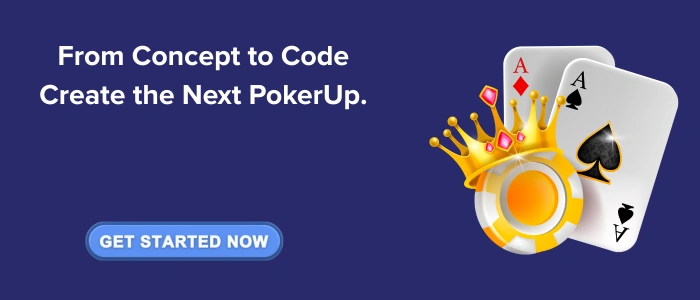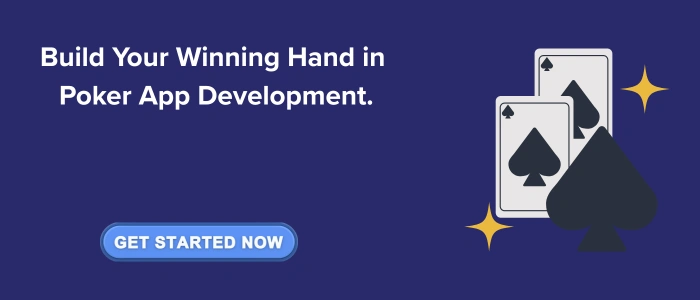The digital poker scene has exploded in recent years, with apps like PokerUp redefining how players engage with online poker games. Offering slick interfaces, seamless multiplayer functionality, and strong community engagement features, PokerUp has set a high standard for mobile poker experiences. If you’re aiming to develop a similar app, this guide will walk you through the essentials: technology, features, monetization strategies, development costs, and much more.
Understanding PokerUp's Success

Before diving into the technical development, it’s essential to understand what made PokerUp a standout success:
- Real-Time Multiplayer Experience
- Intuitive and Appealing UI/UX
- Global Social Interaction
- Cross-Platform Availability
- Secure Payment Integrations
These aspects are key to replicating and innovating upon if you’re building your own poker app.
Explore: Poker Software for sale: Where to Buy, Fully Featured, Licensed, and Ready to Deploy
Primary Features of a Poker App Like PokerUp
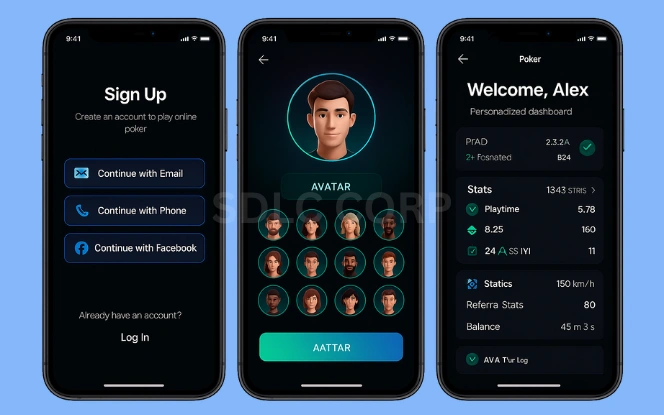
1. User Registration and Profiles
- Sign up via email, phone, or social media
- User avatars and personal dashboards
- Two-factor authentication (2FA) for added account security
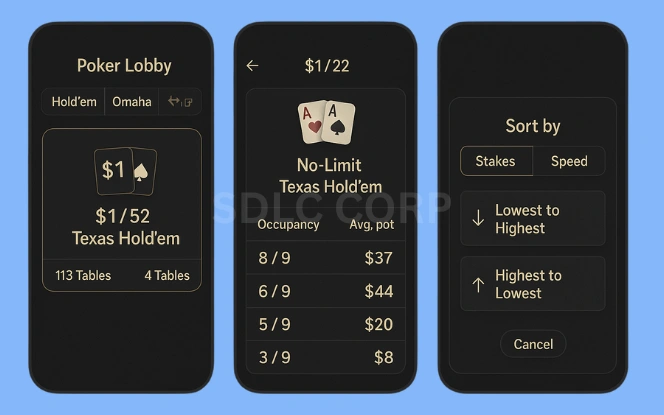
2. Game Lobby and Room Selection
- Various poker formats (Texas Hold’em, Omaha, etc.)
- Real-time room occupancy stats
- Filters and sorting for game type, stakes, and speed
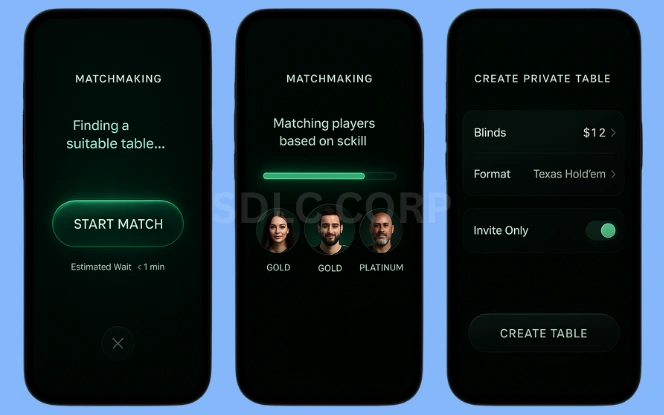
3. Multiplayer Matchmaking
- AI-based player matching
- Custom table creation
- Skill-level matching to balance gameplay fairness
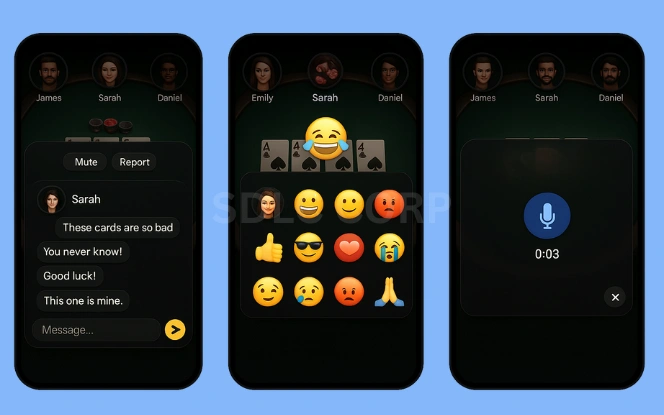
4. Chat and Emoji Interactions
- Real-time chat with moderation tools
- Fun emoji reactions during gameplay
- Voice chat or quick voice notes for live interaction
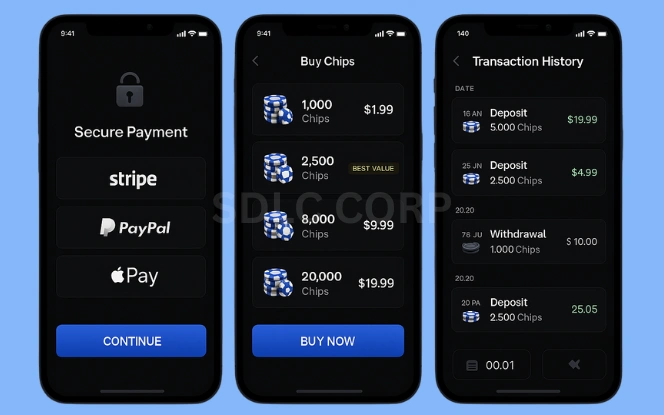
5. Secure Payment Gateways
- Integration with services like Stripe, PayPal, or Apple Pay
- Support for virtual currency
- In-app purchase history and transaction receipts
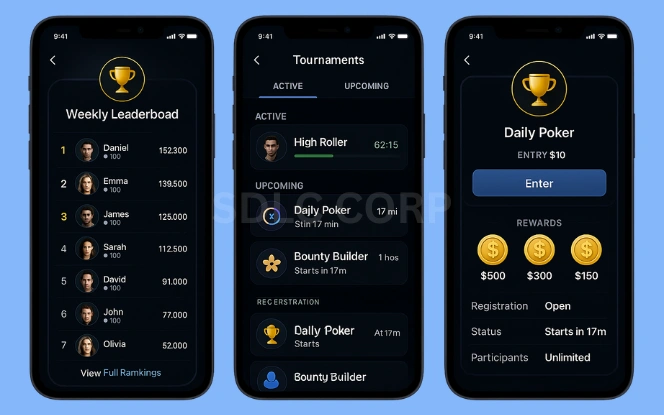
6. Leaderboards and Tournaments
- Weekly/monthly ranking systems
- Special in-game tournaments and rewards
- Real-time tournament status and countdown timers
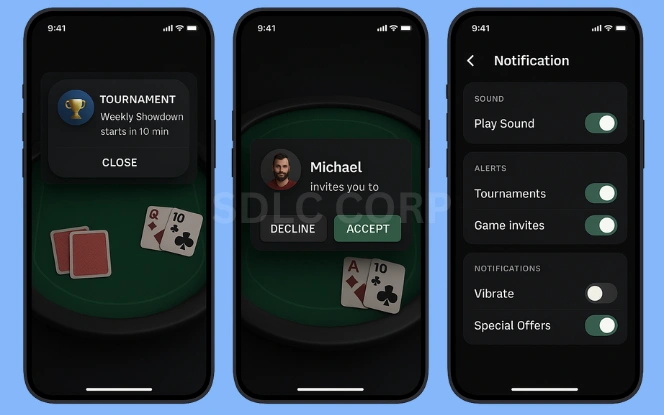
7. Push Notifications
- Game invites, tournament alerts, and promotional offers
- Custom notification settings for sound, frequency, and type
Tech Stack Required for Poker App Development
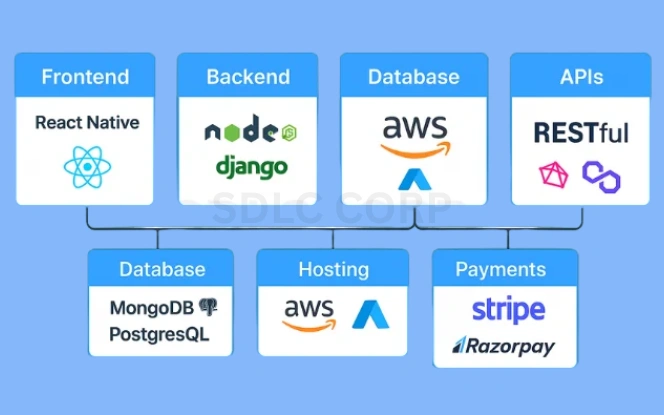
Choosing the right tech stack ensures performance, scalability, and security:
Frontend
React Native / Flutter (Cross-platform mobile apps)
Unity or Unreal Engine (For immersive animations and gameplay)
Backend
Node.js / Django / Ruby on Rails
Firebase for real-time data and notifications
WebSockets for multiplayer interaction
Database
MongoDB / PostgreSQL
Other Tools
AWS / Google Cloud (Cloud services and storage)
Stripe / PayPal (Payment gateways)
Firebase Authentication
Real-Time Game Logic: Core of a Poker App
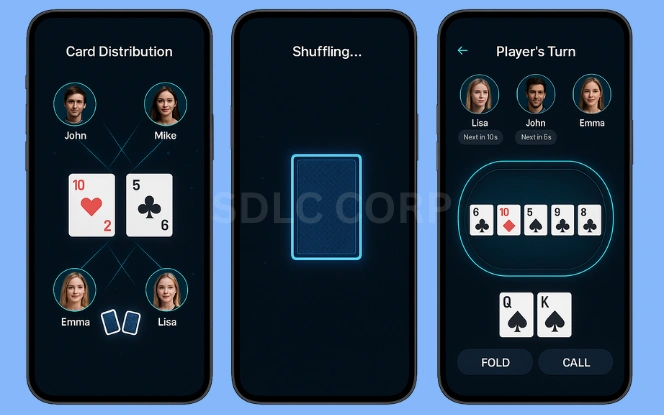
Multiplayer poker apps thrive on flawless real-time game logic. This includes:
- Card shuffling using RNG (Random Number Generator)
- Real-time card distribution and visibility
- Turn-based gameplay flow
- Synchronization across all devices
Ensuring fairness and avoiding exploits requires extensive testing and secure implementation of backend logic.
Also Read: Poker Software with Built-in Tournament and Leaderboard Support
UI/UX Design: First Impressions Matter
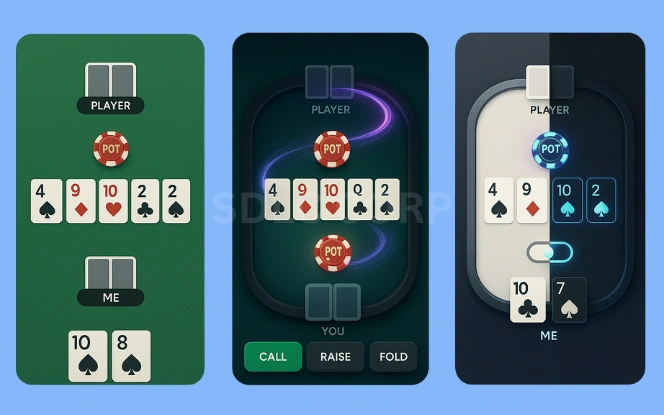
Your app’s visual appeal can significantly affect user retention. Focus on:
- Minimalist, clean layouts
- Dark mode with neon accents (a PokerUp trait)
- Smooth animations and transition effects
- Intuitive in-game controls
Tools like Figma or Adobe XD are perfect for prototyping and wireframing.
Compliance and Licensing
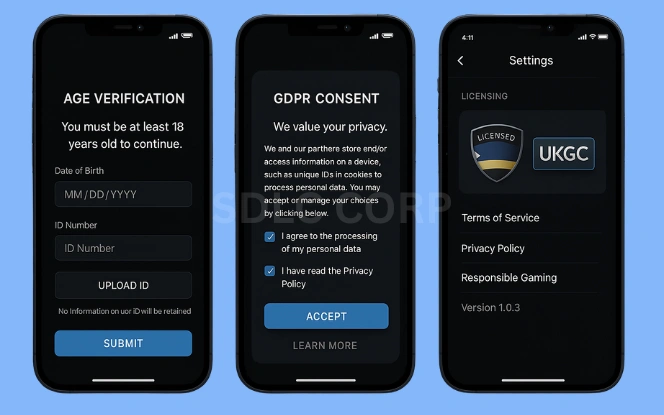
Depending on the region your app targets, you may need to consider:
- Gaming/Gambling Licenses (UKGC, MGA, Curacao, etc.)
- Data protection laws (GDPR, CCPA)
- Age verification systems
- Google Play/App Store compliance for gambling or simulation games
Monetization Strategies
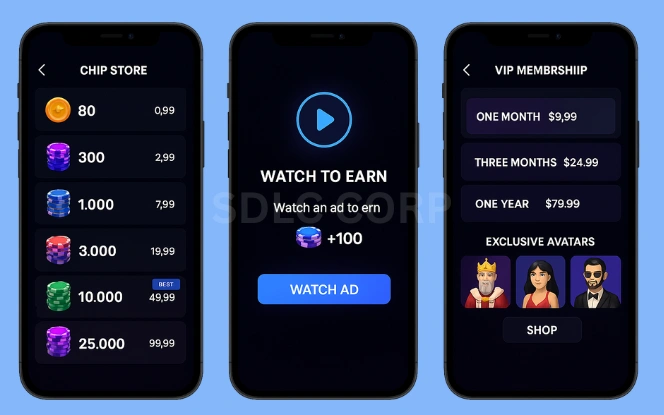
Poker apps like PokerUp don’t necessarily rely on real-money gambling. Here are proven monetization methods:
1. In-App Purchases
Buying virtual chips, avatars, and themes
2. Ad Integration
Rewarded videos, banner ads, interstitials (use sparingly)
3. VIP Memberships
Exclusive tables, avatars, and early access to tournaments
4. Season Passes
Premium progression rewards, limited-time offers
5. Brand Collaborations and Sponsorships
Learn More: How to Apply for a Curacao Poker License: Step-by-Step Guide
Development Cost Breakdown
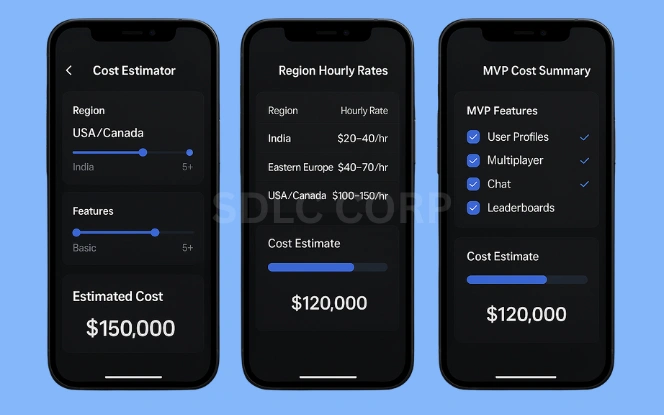
| Region | Approx. Hourly Rate | Total Cost Estimate (MVP) |
|---|---|---|
| USA/Canada | $100-$150/hr | $120,000 - $200,000 |
| Eastern Europe | $40-$70/hr | $50,000 - $90,000 |
| India | $20-$40/hr | $25,000 - $50,000 |
Team Structure for Poker App Development
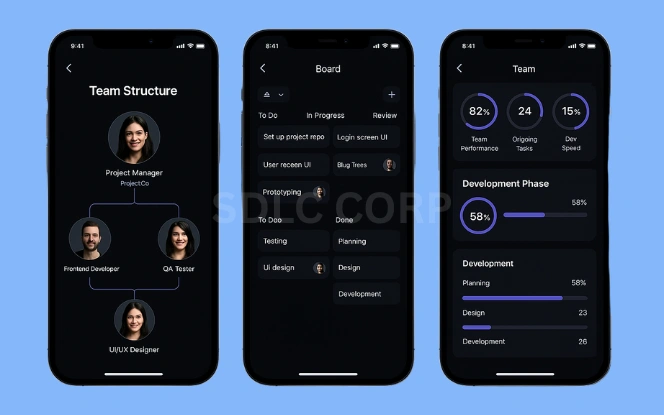
You’ll need a multidisciplinary team, including:
- Project Manager
- UI/UX Designer
- Frontend Developer
- Backend Developer
- QA Tester
- Game Logic Developer
- Marketing and ASO Expert
Related Blog: Step-by-Step Guide to Poker App Development
App Store Optimization (ASO) Tips
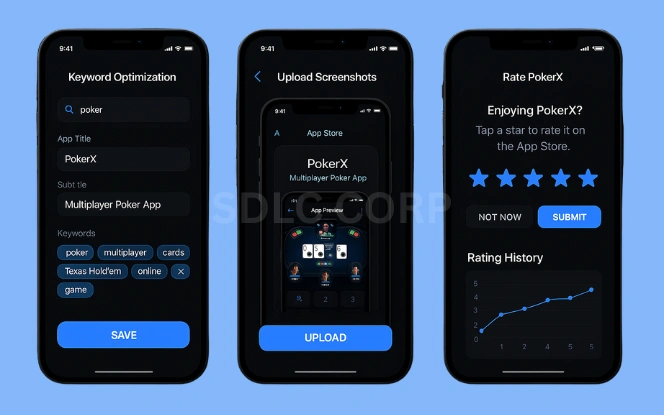
To ensure visibility in the crowded poker app market:
- Use keywords like: “PokerUp app development”, “online poker game”, “multiplayer poker app”
- Encourage reviews and ratings
- Use engaging screenshots and promotional videos
- Regularly update the app for bug fixes and feature additions
Post-Launch Support and Updates
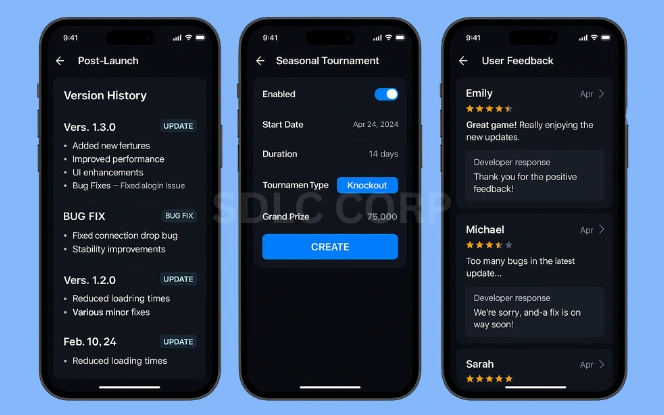
Success doesn’t end at launch. Maintain momentum with:
- Regular bug fixes and optimizations
- Introducing new features like blackjack or slots
- Hosting seasonal tournaments
- Listening to community feedback
Final Thoughts
Developing a poker app like PokerUp requires not just technical proficiency but also a deep understanding of user engagement, game theory, and monetization. With careful planning, the right team, and a clear value proposition, your app can carve a niche in the competitive world of online poker games.
Ready to bring your poker app idea to life? Contact us SDLC CORP
FAQ's
What is Pokerup, and Why is It a Benchmark for Poker App Development?
PokerUp is a popular mobile poker application known for its clean UI/UX, real-time multiplayer features, and strong social elements. It has set the standard for mobile poker experiences with innovations in global matchmaking, voice chat, cross-platform compatibility, and secure payment integration.
What Essential Features Should a Poker App Like Pokerup Include?
A competitive poker app should have:
- Seamless user registration and profiles with 2FA
- Variety of poker formats (e.g., Texas Hold’em, Omaha)
- Real-time multiplayer matchmaking
- Live chat and emoji/voice interactions
- Secure in-app purchases and payment gateways
- Tournaments, leaderboards, and seasonal events
- Push notifications and ASO-compliant design
What technologies are used to build a poker app?
- Frontend: React Native or Flutter, Unity/Unreal Engine (for game visuals)
- Backend: Node.js, Django, or Ruby on Rails
- Real-time Functionality: Firebase, WebSockets
- Database: MongoDB, PostgreSQL
- Cloud Services: AWS or Google Cloud
- Payments: Stripe, PayPal, Apple Pay
How can I ensure fair gameplay in real-time poker?
Implement secure, RNG-based card shuffling, robust server-side game logic, real-time synchronization across clients, and conduct extensive QA testing. This ensures fairness and reduces the risk of manipulation or bugs.
Is it necessary to obtain a gambling license?
Yes, depending on your target regions and whether the app involves real-money gambling. Common licenses include:
- UK Gambling Commission (UKGC)
- Malta Gaming Authority (MGA)
- Curacao eGaming
- Compliance with GDPR/CCPA for data protection is also crucial.

